Sharpening And Maintaining Knives
By David Boye of Boye Knives
Taken From: Step–By–Step Knife Making
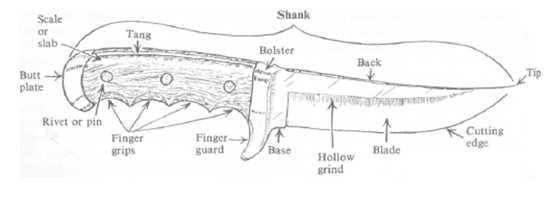
How to "See" the Sharpness
There are several ways to determine if an edge is sharp. Try cutting something, such as paper,rope, or cardboard. A simple and more sure–fire method is to look at it carefully. If the edge is the slightest bit dull, there will be a glint which is a reflection of light on the facet, which is the rounded edge. When the edge is perfectly sharp, there will be no visible glint, even when held opposite a strong light.
Hand–Sharpening
A knifemaker should become expert in hand sharpening. Not only will you need to sharpen in the field, but you will need to instruct your customers on the best ways to obtain a good edge quickly with hand tools.
Tools
A fine sharpening steel is a good tool for maintaining an edge. If the edge becomes dull and needs sharpening, use one or more clean, good quality whetstones. The cheap varieties that are soft and porous are not good knife-sharpening tools. Higher quality carborundum stones with the smooth and coarse sides are good. Arkansas stones, similar to carborundum stones, come in a variety of grades, from coarse to exceedingly fine.
Cleaning the Whetstone
It is important to keep the stone clean. Periodically wash the stone with soap and water, or use a solvent and a rag. Occasionally, it may be necessary to clean the pores of the stone if they are clogged up. To do this, soak the stone in kerosene, wrap tightly in a towel, and bake in a slow oven (250°F.).
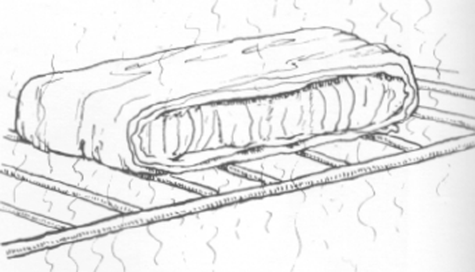
Sharpening
Start with a coarse stone if the knife is very dull. Stroke evenly, keeping the angle to the stone constant. If the knife is used hard, sharpen at a slightly steeper angle, say, about 18 degrees for vegetable knives, 20 degrees for camping knives, 22 degrees for cleavers and hatchets. Take full, even strokes in either or both directions. Evenly hone all parts of the cutting edge. Don't hit the edge of the stone; a small chip in the edge may dull the knife. If you press hard on the stone, without losing the proper angle, the knife will sharpen faster, getting just as sharp. Use a fine honing oil, or saliva, to keep the pores of the stone from clogging up, and wipe the surface of the stone frequently. Work from the coarser to the finer grit stones.
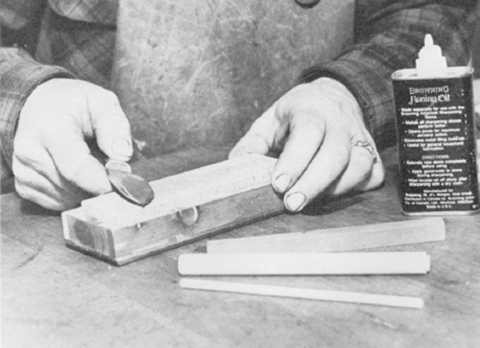
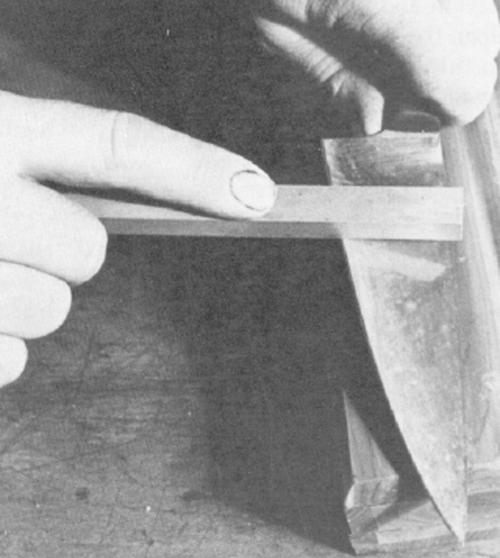
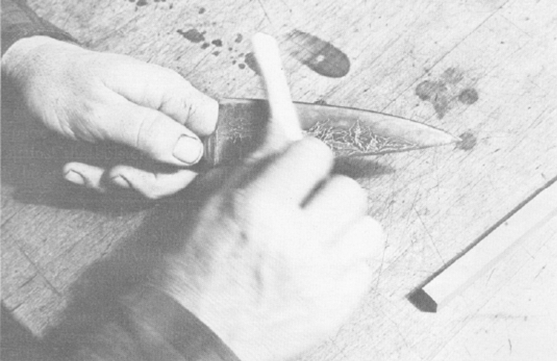
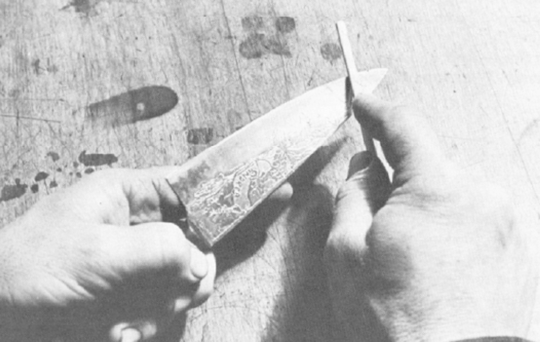
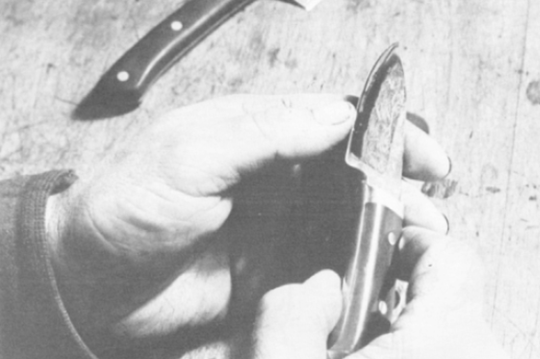
Stropping the Blade
After the blade is sharpened on the stone, it may be stropped. This further sharpens the edge and, more important, makes an edge that will last longer. The relatively soft stropping leather rounds the microscopic tip of the edge slightly, making it stronger, as well as bringing it to a finer point. To strop the blade, rub some fine abrasive compound into the smooth side of a piece of a heavy leather strap, and work the blade, moving away from the edge. Repeat this operation until the edge is fine and smooth enough to slide across your fingernail without the slightest tendency to catch. A stropped edge is a higher quality edge, and should be touched up occasi0nal.ly on the strop, not on a steel or stone; otherwise, you will lose the microscopic rolled edge.
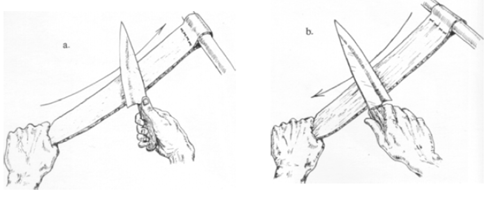
Maintenance of the Knife
If the knives are made from old saw blades, they are high-carbon steel, and not stainless. Therefore, they are subject to discoloration and, if improperly cared for, corrosion and rust. Furthermore, if the handle is made from some organic material, such as wood or bone, this is also subject to decay. lt is therefore important to take certain simple precautions. A knife will stand abuse for short periods of time, such as on backpacking trips or in a survival situation. But it should be well cared for most of the time.
First, the knife should be kept clean and dry. It can be washed with warm water and soap or mild detergent if necessary. Preferably, the knife will simply be wiped clean with a damp cloth. Occasionally, it should be lightly oiled on both the handle and blade. Any oil will do for the knife, but if it is used for food preparation, it is best to use vegetable, olive, or mineral oil. It may be harmful to the handle and the blade to leave the knife setting in dishwater or in a damp place. Rinse the knife with fresh water after exposure to salt water. The luster can be returned to tarnished carbon steel by hand polishing with certain compounds, such as powdered copper cleaner. There are a number of such compounds on the market. Or, you can rebuff the knife periodically, which should make it look exactly like new.




